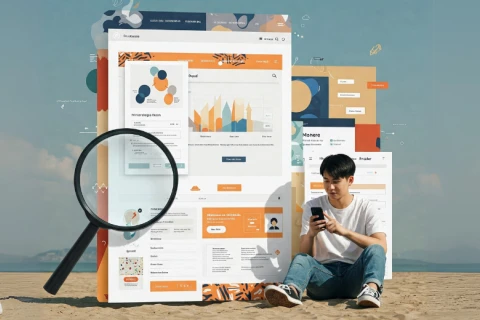Prioritising User Experience: Balancing Client Goals with User Needs
—When it comes to designing a website, clients often have strong opinions about how it should look and function. While personal preferences are understandable, they can sometimes be at odds with what actually delivers the best user experience (UX) for their customers. As a digital agency, it’s crucial to guide clients toward prioritising user needs over personal taste. Here’s why customer-driven UX and expert recommendations should take precedence over a client’s individual preferences.
The Website Isn’t for the Client—It’s for Their Customers
A common misconception among business owners is that their website should cater to their own tastes. However, a website’s primary purpose is to serve its end users—potential customers who need to easily navigate, find information, and take action.
Clients might prefer a certain color scheme, layout, or navigation style, but if those elements create friction for users, they will hurt conversion rates. A website designed with customers in mind leads to a better user experience, higher engagement, and ultimately, more business success.
Data-Driven Decisions Outperform Personal Preferences
Agencies bring valuable experience and industry knowledge to the table. Rather than designing based on opinions, they rely on data—heatmaps, A/B testing, user behavior analytics, and best UX practices. These insights reveal what actually works for customers, rather than what simply looks good to the client.
For example, a client may love a minimalist design with little text, but if users struggle to find key information, they’ll leave the site frustrated. Agencies base their recommendations on proven strategies that enhance usability and conversions, rather than aesthetic preferences.
Bad UX Can Cost Businesses Money
Ignoring expert UX recommendations in favour of personal preferences can directly impact a business’s bottom line. Poor navigation, slow-loading pages, and confusing layouts drive potential customers away. In contrast, a well-optimised UX keeps users engaged, encourages conversions, and fosters brand trust.
If a website frustrates visitors, they won’t hesitate to go to a competitor. Agencies focus on eliminating these pain points, ensuring the design supports business objectives rather than just visual appeal.
Agencies Offer an Outside Perspective
Clients are deeply immersed in their own brand, which can sometimes make it difficult to see things from a customer’s perspective. Agencies bring an unbiased, customer-centric viewpoint to the table. They can identify pain points and usability flaws that a client might overlook simply because they are too close to their own brand.
A fresh perspective helps ensure that the website is built to serve its users effectively rather than catering to internal biases.
Trends and Best Practices Change Constantly
What worked five years ago might not be effective today. UX trends evolve based on new technologies and user expectations. Agencies stay up to date with these shifts, ensuring that a website remains relevant and competitive. Clients who rely on outdated design preferences risk falling behind in an increasingly digital marketplace.
For instance, mobile designs are no longer optional—they are a necessity. If a client insists on a desktop only layout, they will alienate a large portion of their users who access websites via mobile devices.
Conclusion: Trust the Experts for a Successful Website
While a client’s input is valuable, their personal UX preferences should not dictate a website’s design at the expense of user needs and agency recommendations. A successful website prioritises usability, data-backed decisions, and industry best practices to create an optimal experience for customers.
By trusting the expertise of a digital agency and focusing on user needs, businesses can ensure that their website serves its true purpose: converting visitors into loyal customers. At the end of the day, what matters most isn’t what the client likes—it’s what works best for their audience.



